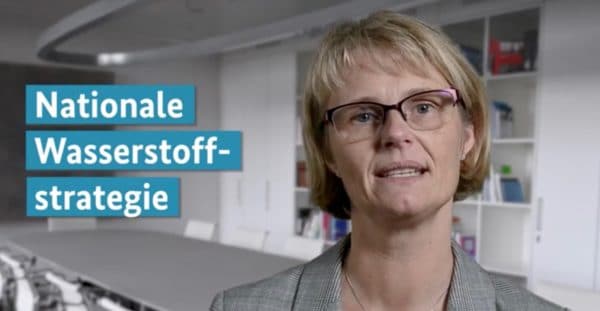Germany and Australia shook hands on an agreement for a joint feasibility study into green hydrogen production and trade back in September. Since then, the University of New South Wales (UNSW) has been announced as the leader of a consortium of research and industry partners from both nations to test the viability of a renewable energy-based hydrogen supply chain between the countries.
Now that consortium has begun its work on what German Minister of Education and Research Anja Karliczek has described as the “Wasserstoffbrücke,” or “hydrogen bridge”. In addition to Australian funding, Karliczek’s Ministry has financed the two-year project to the tune of over €1.7 million (AUD$2.7 million).
The aim of the research is to investigate how a value chain of green hydrogen between the two nations can be established, a way of taking advantage of Australia’s enormous solar resources and Germany’s technical know-how in the field of electrolysis.
Karliczek stressed the importance of green hydrogen as the “energy carrier of the future,” and noted that Germany is an innovative country that “must now set the course for international green hydrogen partnerships. This way we give German companies early access to import sources of green hydrogen and sales markets for hydrogen technologies ‘made in Germany’. Australia has already become a central one Positioned as an export country for green hydrogen and is also an important sales market for German technologies.”

Image: BMBF
UNSW’s Iain MacGill will lead a vast array of researchers from the ARC Training Centre for The Global Hydrogen Economy, along with industry partners including Deloitte, Baringa Partners, and MAN Energy. The team will analyse the entire hydrogen supply chain from production to storage, through to transport, recovery and use. The ultimate goal being the best way to deliver renewable hydrogen to Germany.
“Australia’s potential for renewable energies as well as its know-how in energy exports and in building infrastructures can meet Germany’s import needs and outstanding expertise in mechanical and plant engineering,” said MacGill.
MacGill’s German counterparts, Holger Lösch, Deputy General Manager of BDI (Federation of German Industries), and Robert Schlögl, Director of the Fritz Haber Institute of the Max Planck Society and Acatech (German Academy of Science and Engineering) member, form the management of HySupply.
“With hydrogen we can pack the energy of the Australian sun in tankers and bring it to Germany,” said Schlögl. “Now we want to investigate how this can be done on a large scale and over long distances. For this we have to work at the interfaces of the entire system of production, Transport, conversion and use still clarify urgent research questions. If we succeed in doing that, we have found a strong partner in Australia.”
Germany’s hunger for hydrogen
However, Karliczek stressed that this study needs to take into account the specific needs of Germany.
A recent publication from the Fraunhofer Institute for Solar Energy Systems (ISE) estimated that approximately 325 TWh of hydrogen – or roughly 8.3 million metric tons – will be needed by 2050. So it is no surprise UNSW’s Deputy Vice-Chancellor, Research, Nicholas Fisk said that it is estimated the green hydrogen industry could be worth US$2.5 trillion by 2050 worldwide. Of course, it is both Germany’s and Australia’s National Hydrogen Strategies to be big parts of that.
It has long been assumed Germany was fundamentally incapable of producing the amount of green hydrogen it requires. But the Fraunhofer ISE study alluded to earlier suggests an additional 300 GW of PV systems could produce the hydrogen that Germany might otherwise get as imports – a figure seen as achievable but not a certainty.
If Australia can rapidly advance its green hydrogen export potential, through advancements in shipping and production, other nations without the some freedom of PV might find Australian hydrogen in their best interest.
This content is protected by copyright and may not be reused. If you want to cooperate with us and would like to reuse some of our content, please contact: editors@pv-magazine.com.









1 comment
By submitting this form you agree to pv magazine using your data for the purposes of publishing your comment.
Your personal data will only be disclosed or otherwise transmitted to third parties for the purposes of spam filtering or if this is necessary for technical maintenance of the website. Any other transfer to third parties will not take place unless this is justified on the basis of applicable data protection regulations or if pv magazine is legally obliged to do so.
You may revoke this consent at any time with effect for the future, in which case your personal data will be deleted immediately. Otherwise, your data will be deleted if pv magazine has processed your request or the purpose of data storage is fulfilled.
Further information on data privacy can be found in our Data Protection Policy.